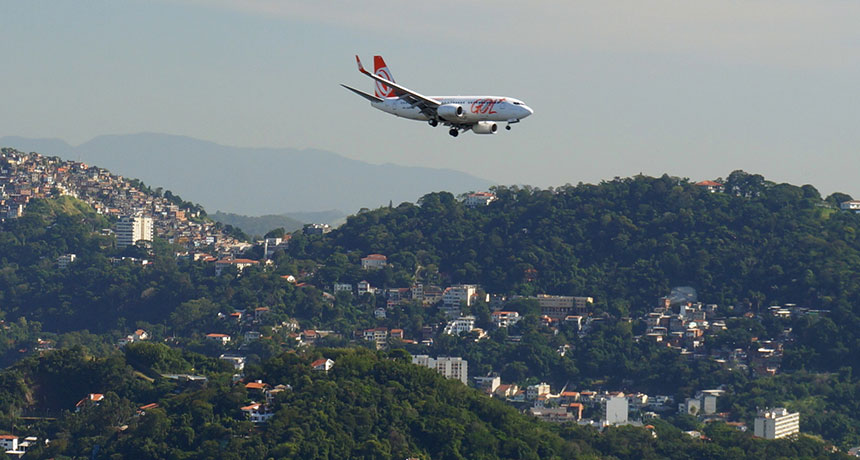Zika may have flown to Brazil in 2013

The Zika virus may have hopped a ride on a 747 from Southeast Asia in 2013 to invade the Americas.
Oliver Pybus, an evolutionary biologist at the University of Oxford, and his colleagues have retraced the virus’ steps in Brazil and pinpointed its introduction there to between May and December 2013. That coincides with a time when Brazil saw a significant increase in air travelers to and from countries with active Zika outbreaks, the researchers report online March 24 in Science.
The team analyzed Zika genomes — the virus’s genetic blueprint — from seven Brazilian patients, including a blood donor and a newborn with microcephaly. The blueprints had a lot in common, suggesting that the virus probably entered the country just once before Brazil detected its first case in May 2015.
The virus probably arrived in Brazil from Southeast Asia or the Pacific islands in mid- to late 2013, the researchers say. They found that the Americas lineage came from the Asian branch of the Zika family tree — not the African one — and is most closely related to the virus from a 2013 outbreak in French Polynesia. It split from its French Polynesian cousin in May of 2013, and strains started to diversify from each other in December 2013.
Previous studies linked Zika’s arrival in the Americas to the 2014 World Cup in Brazil. The new timeline instead coincides with another soccer tournament held in Brazil, the Confederations Cup in June 2013, which included a team from Tahiti.
But regular air travel, rather than an individual sporting event, is the more likely source of introduction, the study’s authors argue. The number of passengers arriving in Brazil from countries with reported Zika outbreaks jumped from 3,775 per month in early 2013 to 5,754 per month in 2014.
While the upcoming Olympic Games in Rio de Janeiro could bring new strains of the Zika virus to Brazil, their epidemiological effect would be minimal, says Pybus, akin to a drop in an ocean of Zika.